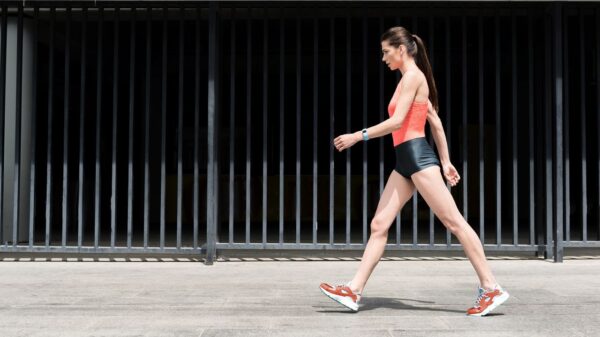A recent study reveals that making slight adjustments to walking stride can significantly alleviate pain associated with knee osteoarthritis. Researchers published their findings on March 6, 2025, in The Lancet Rheumatology, noting that changing foot positioning while walking can reduce stress on knee joints.
Participants who were trained to angle their feet slightly inward or outward from their normal alignment experienced a noticeable reduction in knee pain and improved function over the course of a year. Co-lead researcher Valentina Mazzoli, an assistant professor at NYU Grossman School of Medicine in New York City, emphasized the potential of this approach to lessen reliance on pain medications and postpone the necessity for knee replacement surgeries.
The study involved 68 individuals diagnosed with knee osteoarthritis. Researchers assessed their gait while walking on a treadmill, using a computer program to simulate and analyze their walking patterns. The program calculated the maximum stress exerted on participants’ knees.
To find the best approach for each participant, the research team created computer models of four new foot positions, adjusted by 5 or 10 degrees inward or outward. Participants were then randomly assigned to one of two groups: one group underwent six training sessions to adopt their optimal foot angle, while the other group continued to walk normally.
Results showed those who modified their gait achieved a 4% reduction in maximum knee loading. In contrast, the group maintaining their usual stride saw an increase of over 3% in loading. Additionally, participants trained in the new foot positioning reported a 2.5-point decrease on a 10-point pain scale, comparable to the effects of common over-the-counter pain relievers like NSAIDs and acetaminophen.
Mazzoli highlighted the importance of personalized treatment plans, stating, “These results highlight the importance of personalizing treatment instead of taking a one-size-fits-all approach to osteoarthritis.” She noted that advances in artificial intelligence could facilitate this process, allowing for easier detection of body motion. AI software capable of estimating joint loading through smartphone videos is now available, enabling doctors to conduct gait analyses without specialized laboratory equipment.
Looking ahead, the research team plans to explore whether these AI tools can effectively identify the optimal walking methods for patients with knee arthritis. They also aim to expand their study to include individuals with obesity, further addressing a significant health concern.
For further information on knee arthritis, the American Academy of Orthopedic Surgeons provides additional resources. This innovative approach to managing osteoarthritis may open new avenues for treatment, offering patients a practical and cost-effective solution to their knee pain.



































































